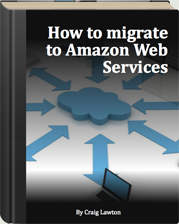The topic of part 3 in this blog series is vendor lock-in.
One of the promises of cloud computing is the ability to move computing in and out of the cloud as business demand requires.
That is, when you need some computing power you dial up some cycles and use it, and when you are finished you return those cycles.
Cloud computing should make it easy to mix and match between AWS and on-premises infrastructure and to let data flow between as needed. That is, when you move to AWS, you should be increasing your choices, not decreasing them.
But if you decided you’d had enough of AWS and it was time to give Rackspace a go, would it be easy to move on?
The migration process would be to build a replica infrastructure at your new provider, install the applications, test it and then migrate your data (In this era of big data this could be a big problem! If you put a ton of data up in the cloud, the time and expense to migrate out itself can be prohibitive.)
If you use higher-value services such as Amazon’s Simple Workflow Service or DynamoDB it gets more difficult to migrate as you have to find an equivalent service. The more your organisation uses unique AWS services the harder it is to move on. For example, If you choose to use AWS Elastic Load Balancing capability instead of an open load balancing choice such as HAProxy, or a commercial offering like F5 or Citrix Netscaler, that part of your application cannot “burst” between clouds without re-architecting or maintaining multiple infrastructure architectures.
The conundrum is, as it has always been with cool new tech trends, that many high-value services increase your productivity at the same time as they increase your lock-in.
Some points you should consider regarding vendor lock-in for cloud providers in general are:
- Has your provider pledged support to emerging industry standards, such as the Cloud Data Management Interface (CDMI)? As far as I could tell Amazon hasn’t signed on yet.
- Have they provided suitable data migration tools? (Eg. Amazon Import/Export)
- Have you read the fine print in the provider’s policies regarding data management? http://aws.amazon.com/serviceterms/
- Do the provider have open and well-supported APIs?
- Does your provide support they same type of heterogeneous environments you do in-house? Amazon do in many aspects but also provide their own unique services.
- Is their support for orchestration and templates suitable? The last thing you want is to have to redesign the thousands of workflows or templates. Standards such as TOSCA are emerging.
- Can your provider’s platform be customised to suit your business? Integration of existing user identity and approval processes is a good example.
- Can web services hosted in AWS be integrated with your business? How will this work?
What have I missed? Is this a problem for your business? Is lock-in a showstopper for you?




4 Comments